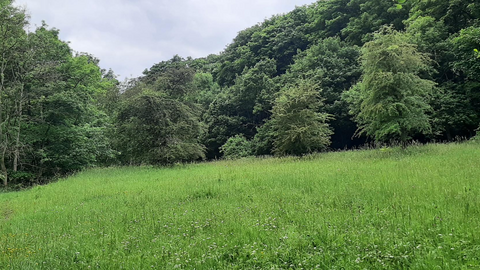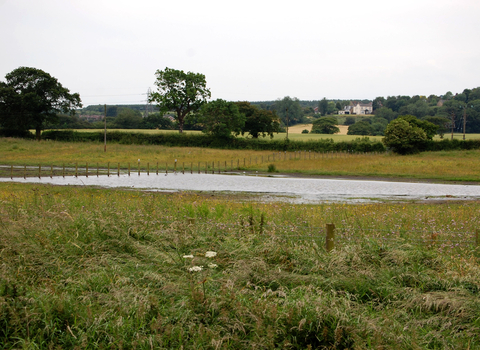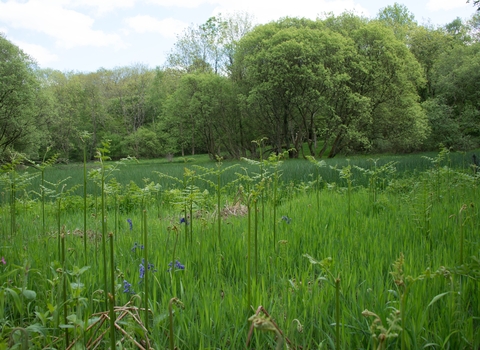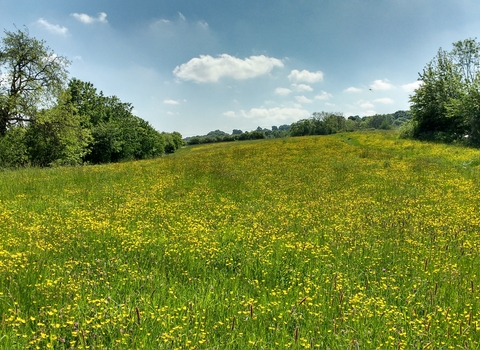
Ousbrough Wood
Know before you go
Dogs
When to visit
Opening times
Always openBest time to visit
April, May, June, JulyAbout the reserve
A vibrant, ancient woodland with a long and surprising industrial history. It’s hard to believe that for hundreds of years scores of people lived and worked here in what was then a busy, noisy industrial valley. As these industries closed and people moved away, nature once more claimed the valley.
History
This wonderful ancient woodland was once the heart of a thriving industrial community. The waterpower from Beamish Burn was the driving force behind four iron forges, a flint mill, a tannery, three corn mills, two fulling mills, a paper mill, a colliery pump and a blacking mill all operating within a mile of here. At its peak in 1841, seventy six people lived and worked in the woods here.
Habitats
Ousbrough Wood is protected as a Local Wildlife Site. A mixed woodland, one half is ancient woodland and still contains many of the species that would have been present here over 400 years ago. The other half is a conifer plantation on a previous ancient woodland site. Beside the river, an open glade retains a diverse, flower-rich grassland.
Species
In the areas of ancient woodland, oak and silver birch woodland grows. The soils slightly acidic in nature support a ground flora of ling (heather), bilberry and heath bedstraw. On richer soils, ash and elm grow, beneath which is an understorey of hawthorn, hazel and guelder rose. In the spring, the floor of much of Ousbrough Wood is carpeted with bluebells, ramsons (wild garlic), primrose, dog’s mercury and wood anemone. These are plants which are normally only found growing in ancient woodland.
Within the conifer plantation, there is Scots pine, Douglas fir, western hemlock and larch. At the north of the site some truly magnificent old beech trees stand guard high above the Beamish Burn. The meadow, something of a sun-trap, is a good place to see butterflies. Look out for the common blue, small and large skippers, the meadow brown, small tortoiseshell and peacock. Roe deer and foxes frequent the quieter parts of the wood. In spring and early summer, the woods become alive with the song of the willow warbler, chiffchaff and blackcap and the great spotted woodpecker ‘drumming’ its bill against a tree. Look out for dippers and grey wagtails, feeding on invertebrates in the Burn. A stay in the woods until dusk may be rewarded by the call of tawny owls.
Management
Today the wood is managed to conserve and enhance its wildlife. This involves removing some of the ‘non-native’ trees and plants like western hemlock and Himalayan balsam. Over time the conifer plantation will be thinned to allow areas of heathland and oak/silver birch woodland to re-grow naturally. The grassland is managed as a traditional hay meadow to encourage wildflowers like devil’s bit scabious, betony, sweet cicely, wood crane’s-bill and pignut grow.
Species
- Tawny owl
- English oak
- Silver birch
- Heather
- Common hawthorn
- Hazel
- Guelder-rose
- Bluebell
- Wild garlic
- Primrose
- Dog's mercury
- wood anemone
- Scots pine
- European larch
- Common beech
- Common blue
- Large skipper
- Small skipper
- Meadow brown
- Small tortoiseshell
- Peacock
- Roe deer
- Red fox
- Willow warbler
- Chiffchaff
- Blackcap
- Great spotted woodpecker
- Dipper
- Grey wagtail



